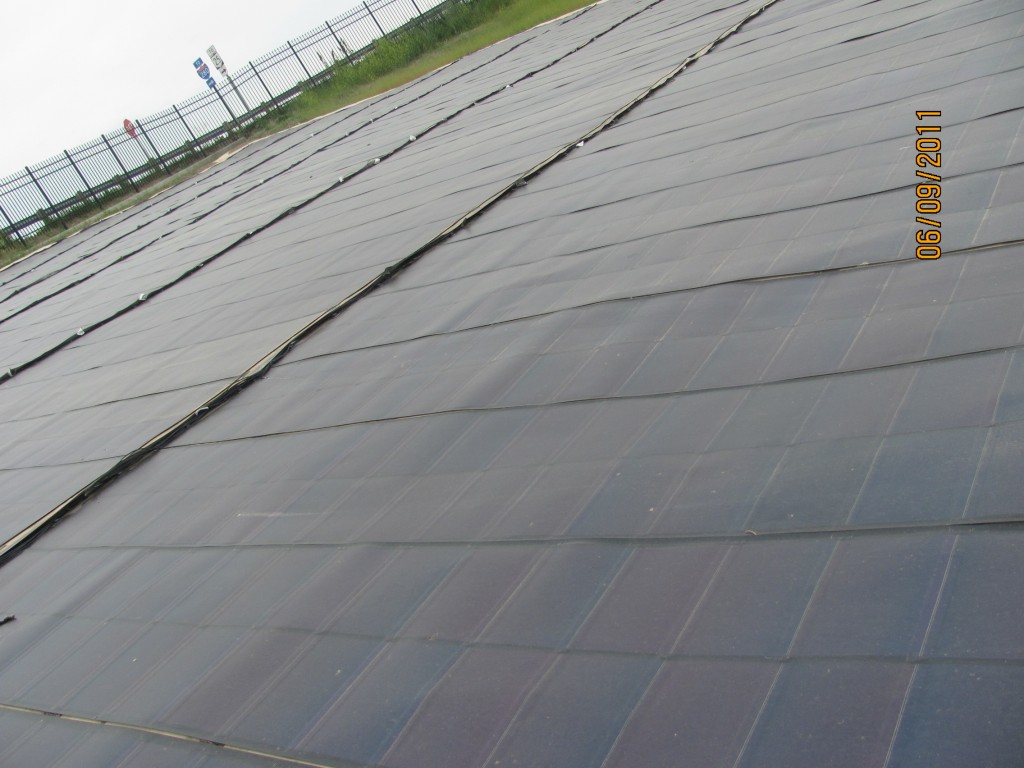Let It Shine
I-280 Solar Panels Produce More Energy as Sun Rays Strengthen
Summer sun is allowing the Ohio Department of Transportation to cut energy expenses. During the first week in June, the solar panels along Toledo’s Interstate 280 near the Maumee River have produced enough energy to save $95 per day in the average cost of energy. This output is over 100 times greater than the first day of production in January 2011.
The Ohio Department of Transportation is taking part in a new trend in solar energy production, using the energy to power highways across the nation. Creating solar energy involves using solar panels to capture energy from the sun and converting it into power, most commonly electricity.
This year, the I-280 panels, used to power the Veterans’ Glass City Skyway Bridge, became the first solar highway in Ohio. The Skyway Bridge, along with most highway systems, requires large amount of energy to function, an expensive cost for transportation departments to maintain. In 2009, the Oregon Department of Transportation announced the premiere of the first solar highway, a highway powered by solar energy, in the country.
This solar panel project began in 2005 when Ohio Congresswoman Marcy Kaptor obtained a grant for an ODOT project. During the production of the Veterans’ Bridge, Richard Martinko, who was then employed for ODOT and project manager of the bridge, and his crew brainstormed on how to efficiently power the bridge.
Mike Gramza, district planning and engineering administrator for ODOT, said methane gas had been one alternative considered for the project. Martinko said energy could also be obtained from wind power.
ODOT selected solar energy toward the completion of the bridge project.
After being employed by UT as the director of transportation research, Martinko was familiar with the project’s power saving initiative. University of Toledo proposed to do a research for ODOT which would involve solar energy.
So far this summer, the panels have produced more than the amount needed to power the bridge.
Martinko explained that ODOT uses a net metering system to capturw and expend the energy.
“The panels produce energy, which goes to the onsite meters, and ODOT receives credit,” Martinko explained. ODOT stores the credit, which is used to provide electricity to the bridge. Because the bridge is now supplying its own energy credit, there is no need to purchase energy from the local supplier.

Meters maintained by the Energy Research Initiative (ERI) to collect data. Photo by Nikia Washington
Gramza explained that ODOT has two meters, one in current use, which captures the energy output of the panels.
“The energy companies are trying to buy the energy we produce for a fraction of the price it’s worth,” Gramza said.
Energy companies commonly attempt this method; they obtain energy for a lower cost and sell to their customers at regular price. To prevent losing money by selling the energy at such a low cost, ODOT has decided to begin using its second meter. This second meter will allow the city to collect more credit and provide more electricity. Without the second meter, additional energy would be lost.
These credits can be stored and will be useful during the colder months when the sun is weaker.
“There’s always more solar energy in the summer than there is in the winter,” said Allen Bowen, project manager for Advance Distributed Generation (ADG), the solar heating company that installed the panels and will maintain them until March 2012.
UT selected the Maumee-based branch of ADG, along with local companies Xunlight and First Solar, for the project.
“The University of Toledo did the design, maintenance, and review,” Gramza said.
Students and staff are responsible for the research conducted on the bridge.
“With the panels and work we’ve done onsite, it rounds out to about $1.7 million,” Martinko said, in reference to the total cost of the project.
Xunlight & First Solar provided the solar panels, each with two different models. The First Solar model resembles most glass panels, multiple photovoltaic cells beneath a layer of thick glass. The Xunlight panels are flat, lightweight, and flexible, most commonly used for roofing.
“What we would be comparing is the energy output from both of the panels,” Martinko said. He and Gramza were sure to note they are not comparing the efficiency of the two; there is not a competition between the two products.
UT also contracted with Energy Research Initiative, a company that gathers data daily from the solar panels. This data is the leading source for Lucid Designs, a website production company selected by UT to design a web database.
“We want to educate the public on the green initiative,” Martinko said.
In addition to the website, ODOT and UT have installed kiosks at the Interstate 75 rest stop south of Bowling Green and on UTs campus.
If the project goes well, officials want to power rest stops, signs, and maintenance garages with solar energy.

Mike Gramza defined the Xunlight panels as plastic blankets. To efficiently use the panels, construction workers had to build hill in order for the panels to lie on a slope. Photo by Nikia Washington



